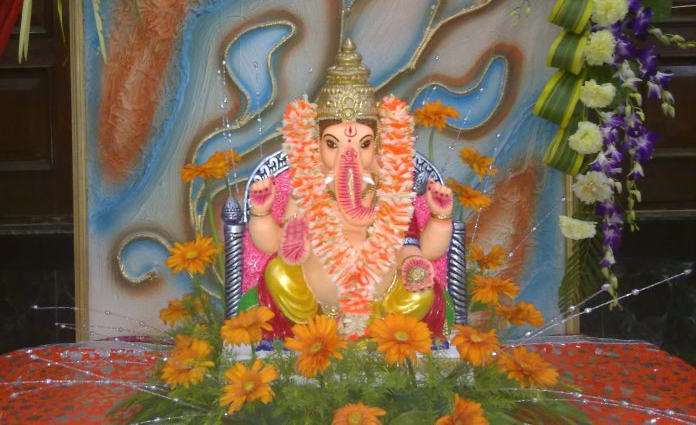Ganesh Chaturthi is celebrated by youngsters in the educational institutions of Odisha to commemorate the birth of the Lord who is believed to have the power to remove all obstacles and grant prosperity.
Ganesh Puja celebrations assumed significance during the rule of Chhatrapati Shivaji when they were seen as a means to promote culture and nationalism in Maharashtra. Lord Ganapati was the family deity of the Peshwas. After the Peshwa era, Ganesh Chaturthi remained a family affair in Maharashtra between 1818 and 1892.
The festival again became a public event in 1892, when a Pune resident Krishnajipant Khasgiwale visited Maratha-ruled Gwalior, where he witnessed the Ganesha Chaturthi celebrations. When he returned to Pune, he drew the attention of his friends Bhausaheb Laxman Javale and Balasaheb Natu to these celebrations. Javale, who was known as Bhau Rangari, installed the first “sarvajanik” Ganesha for worship in public.
It was the visionary social reformer and freedom fighter Lokamanya Bal Gangadhar Tilak who popularised Ganesh Chaturthi as a national festival realising that it could bridge the gap between Brahmins and non-Brahmins and unite the different sections of Hindu society. With this festival, he united the people at the grassroots in his fight against the British. Tilak chose Ganesh Chaturthi as a rallying point to bring together all segments of the Hindu society. He supported the festivities of sarvajanik Ganesha Utsav in his newspaper, ‘Kesari’, and dedicated his efforts to make the annual festival a public event.
After 1870, the British Empire passed a series of ordinances banning public assembly for social and political purposes of more than 20 people in British India but exempted religious congregations for Friday mosque prayers under pressure from the Muslim community. Tilak believed that this effectively blocked the public assembly of Hindus whose religion did not mandate daily prayers or weekly gatherings, and he leveraged this religious exemption to make Ganesh Chaturthi a public event in a bid to circumvent the British colonial law on large public assembly. He was the first to install large images of Ganesha in pavilions in the Bombay Presidency.
Tilak passionately committed himself to Lord Ganesha after the 1893 Hindu-Muslim communal violence in Bombay, when he felt that the British India government under Lord Harris had repeatedly taken sides and treated Hindus unfairly because they were not well organised. So, in Tilak’s view, Ganesha worship and processions which were popular in rural and urban areas in Baroda, Gwalior, Pune and in the Maratha region in the 18th century could be turned into a mass movement using discourse, poetry recitals, plays, concerts, and folk dances.
SOYONG,OP
